43 reading nutrition fact labels
Label reading fact sheet | Baker Institute Fact sheets. Label reading. This fact sheet gives you guidance on understanding how to read nutrition information panels to help you identify healthy choices. This fact sheet will allow you to identify processed and packaged foods that are: lower in energy (kJ) lower in saturated and trans fat. lower in sugar. lower in sodium (salt) Nutrition Fact Labels: Why you need to read them. Pick up a food "item" and turn the product over and read the nutrition fact label. But here's the thing: I'm less worried about the percentage of fat to calories, or number of carbs or protein. Real food comes in all varieties and you NEED those basic building blocks of fat, carbs, and proteins. No, what I'm interested in is the ...
How to Use the Nutrition Fact Label, Eat Right, NHLBI, NIH Get enough of these: potassium, fiber, vitamins A and C, calcium, and iron Use the Percent Daily Value (% DV) column when possible; 5% DV or less is low, 20% DV or more is high Visit the Smart Food Shopping page and learn how the label can help you choose foods lower in calories, fat, and added sugar to help maintain a healthy weight.
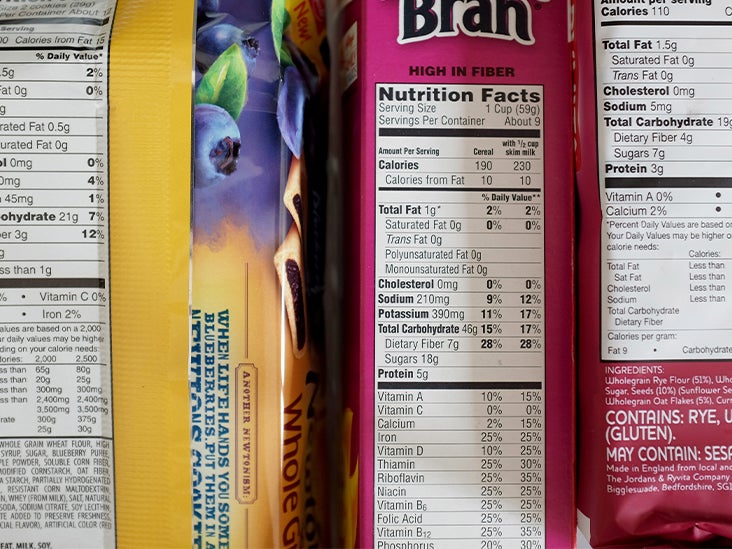
Reading nutrition fact labels
Quick Tips for Reading the Nutrition Facts Label Quick Tips for Reading the Nutrition Facts Label Use Percent Daily Value (%DV) as a guide. The %DV shows how much a nutrient in a serving of the food contributes to a total daily diet. As a general... PDF TO CARE 4 YOURSELF READING A NUTRITION FACTS LABEL - novoMEDLINK Potassium300mg 9% Protein 6g Total Carbohydrate18g Saturated Fat 0g Dietary Fiber 6g Vitamin A 0% Calcium 4% Folic Acid 0% Sugars 1g Trans Fat 0g Polyunsaturated Fat 0.5g Monounsaturated Fat 0.5g Vitamin C 0% Start here What you eat is important. But so is how much you eat. So start by looking here. Reading Nutrition Facts Labels - EFNEP - Expanded Food and Nutrition ... Percent Daily Values (%DV) tell you how much of a certain nutrient you will get from the product. If the label says "10% Total Fat," this means one serving of the food is 10% of all the fat you should be eating each day. However, Daily Values (DV) are based on a 2,000 calorie per day diet. You may need more or less than 2,000 calories per day.
Reading nutrition fact labels. 3 Ways to Read Nutrition Facts on Food Labels - wikiHow Protein is essential when it comes to promoting healthy muscle growth and maintaining a good energy level throughout your day. 9. Know that 5% of a daily value per serving is low and 20% is high. When it comes to nutrients, 5% or less is considered low and 20% or higher is considered high. How to Read Nutrition Facts Labels the Right Way - GoodRx Nutrition Facts labels are required to list the total fat, saturated fat, and trans fats on packaged food products. It's important to choose foods with the right kinds of fats. Here are the differences between the fats you'll see on the label. Bad fats Saturated and trans fats are the less healthy types of fats. Reading Nutrition Facts Labels | Magaram Center Nutrition Experts Blog Vitamin D and potassium values are now required on the new label. Calcium and iron will continue to be required on the label. Vitamins A and C will no longer be required but can be included on a voluntary basis. The reason for this change is that most people get enough vitamin A and C in their daily diet. Updated Sodium Allowance How to Read a Nutrition Facts Label - The Family Meal Project How to Read a Nutrition Facts Label 1. Look at the serving size: Look at the serving size and the number of servings per package Compare your typical portion size to the one listed on the nutrition facts label For instance, if the serving size is 1 cup and you typically have 2 cups, that indicates you are consuming twice the calories and nutrients
Food label reading guide | Nutrition Australia What to look for when reading food and drink labels (per 100g) Health Star Ratings The Health Star Rating is a front of pack labelling scheme which can be used to make healthier food choices at a glance. The rating range is from ½ - 5 stars and the more stars, the healthier the choice. Recommended minimum star ratings for food and drink categories How to Read a Nutrition Facts Label - Everyday Health When reading a nutrition facts label, look at the serving size first. "This helps put the nutrient information into context and allows comparison between products," says Goergen. Serving size is... The Nutrition Facts Label: Look for It and Use It! | SNAP-Ed Read the Label includes lots of tips and challenges created especially for you! These printable activities help you learn more about servings, calories, and nutrients. So, get started today. You'll learn a lot and have fun when you Read the Label! Website Nutrition Facts Label (PDF,566 KB) Funding Source Food and Drug Administration Free Material How to Read the Nutrition Facts Label | Ohioline The percent daily value (% DV) indicates whether foods are high or low in these nutrients. In general, 5% or less is considered low and 20% or more is considered high. In the label pictured in Figure 1, for example, the % DV for added sugar in one serving of the food is 20%, so this would be considered a food that is high in sugar.
How to Read a Nutrition Facts Label - The Family Meal Project How to Read a Nutrition Facts Label. 1. Look at the serving size: Look at the serving size and the number of servings per package. Compare your typical portion size to the one listed on the nutrition facts label. For instance, if the serving size is 1 cup and you typically have 2 cups, that indicates you are consuming twice the calories and ... PDF MOVE! Nutrition Handout N10: How to Read a Nutrition Facts Label size" is the official term used on food labels. Nutrition facts given on the food label are based on one serving. Be sure to look at the number of servings in the container. Even small containers may have more than one serving. If you eat the whole container, then you must multiply the nutrition values by the number of servings in the ... Nutrition Facts Label Guide | NHLBI, NIH Learn more about web-only publications. Food labels can help you make healthier choices. Here's information on how read labels on food packaging to help you make quick, informed decisions about the what foods to choose. Keywords: DASH, High Blood Pressure, Heart-Healthy Living. The Basics of the Nutrition Facts Label The following is a quick guide to reading the Nutrition Facts label. Step 1: Start with the Serving Size Look here for both the serving size (the amount people typically eat at one time) and the number of servings in the package. Compare your portion size (the amount you actually eat) to the serving size listed on the panel.
Reading nutrition labels Fat Free/Sugar Free - less than 1/2 gram of fat or sugar per serving. Low Fat - 3 grams or less of fat per serving.. Your Growing Teens Need to Know How to Read Nutrition Labels. How to Read Nutrition Labels in 2019 Medically reviewed by Carissa Stephens, R.N., CCRN, CPN — Written by Sarah Garone — Updated on. 0.79%. 1 star. 0.53%. From the ...
Understanding Food Nutrition Labels | American Heart Association Make sure you get enough of the nutrients your body needs, such as: calcium, choline, dietary fiber, iron, magnesium, potassium, and vitamins A, C, D and E.* 5 - Understand % Daily Value. The % Daily Value (DV) tells you the percentage of each nutrient in a single serving, in terms of the daily recommended amount.
How to Easily Read Nutrition Facts Labels | Underscore_ Sodium. Sodium (listed in milligrams) is necessary for keeping proper body fluid balance. The total Sodium shown on Nutrition Facts labels includes the Sodium from salt, plus Sodium from naturally occurring ingredients. The American Heart Association recommends no more than 2,300 mg of Sodium (about 1 tsp of salt) per day.
Reading Nutrition Facts Labels - University of Arizona If you eat both servings then you'll actually eat 500 calories. Look at the percent daily value. As a guideline, a % daily value about 20% is high and below 5% is considered low. So this product is high is Calcium and Sodium, but low in Iron, Fiber and Vitamins A and C. Look out for saturated fat, trans fat, sodium and cholesterol.
Reading a Nutrition Facts Label - YouTube Learn how to identify specific information on a nutrition facts labels including serving size, servings per container, calories per serving, and what to eat ...
How to Read Nutrition Facts Label - Food Network This carries over to all the other nutrients on the label. If 1 serving of a food has 120 mg of sodium, it can technically be labeled as a "low sodium" food. However, if you eat 3 servings, triple...
How to Understand and Use the Nutrition Facts Label | FDA When looking at the Nutrition Facts label, first take a look at the number of servings in the package (servings per container) and the serving size. Serving sizes are standardized to make it easier...
Learn How the Nutrition Facts Label Can Help You Improve Your Health Read the Nutrition Facts labels on your packaged food and drinks to keep track of sugars, fats, protein, and other nutrients. Most sodium we consume is from salt, and salt is commonly in processed foods. Read labels and choose the product with less sodium. Drink plain water instead of sugary beverages.
How To Read Food and Beverage Labels - National Institute on Aging How to read the Nutrition Facts label The U.S. Food and Drug Administration (FDA) requires a Nutrition Facts label on most packaged foods and beverages. At the top of the Nutrition Facts label, you will find the total number of servings in the container and the food or beverage's serving size.
PDF How Do I Understand the "Nutrition Facts" Label? Nutrition Facts label and ingredient list. When you go grocery shopping, take time to read the Nutrition Facts labels on the foods you purchase. Compare the nutrients and calories in one food to those in another. The information may surprise you. Make sure you aren't buying foods high in calories, saturated fat, trans fat, sodium and added ...
How to Read the Nutrition Facts Label - Urogynecology ELLE: The nutrition facts label lists macronutrients (carbohydrate, fat, and protein) and fiber content of foods, as well as some micronutrients (vitamins and minerals). Knowing how to interpret this information can be very beneficial for your health. Perfect segue! Let's talk about the percentages we see for macronutrients and micronutrients.

Label Reading 101 - How to Read and Understand Nutrition Labels | Reading food labels, Nutrition ...
Reading Nutrition Facts Labels - EFNEP - Expanded Food and Nutrition ... Percent Daily Values (%DV) tell you how much of a certain nutrient you will get from the product. If the label says "10% Total Fat," this means one serving of the food is 10% of all the fat you should be eating each day. However, Daily Values (DV) are based on a 2,000 calorie per day diet. You may need more or less than 2,000 calories per day.
PDF TO CARE 4 YOURSELF READING A NUTRITION FACTS LABEL - novoMEDLINK Potassium300mg 9% Protein 6g Total Carbohydrate18g Saturated Fat 0g Dietary Fiber 6g Vitamin A 0% Calcium 4% Folic Acid 0% Sugars 1g Trans Fat 0g Polyunsaturated Fat 0.5g Monounsaturated Fat 0.5g Vitamin C 0% Start here What you eat is important. But so is how much you eat. So start by looking here.
Quick Tips for Reading the Nutrition Facts Label Quick Tips for Reading the Nutrition Facts Label Use Percent Daily Value (%DV) as a guide. The %DV shows how much a nutrient in a serving of the food contributes to a total daily diet. As a general...
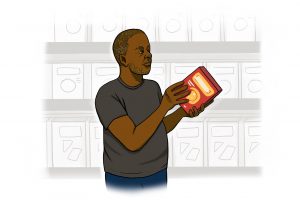
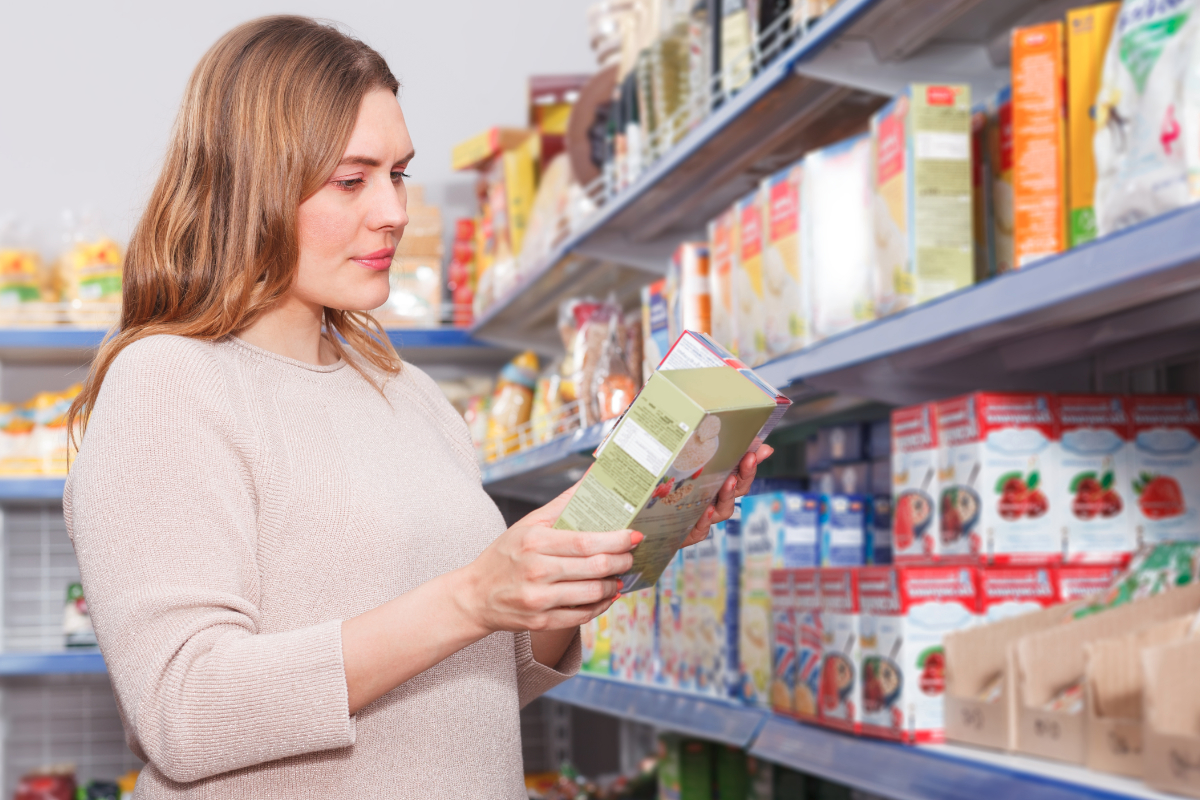

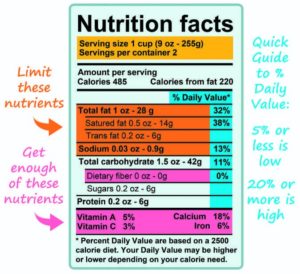



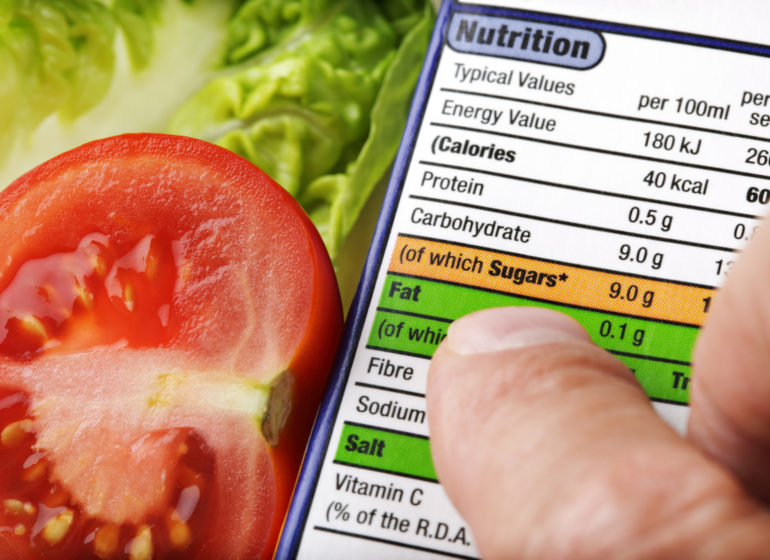
.png?1425176648)

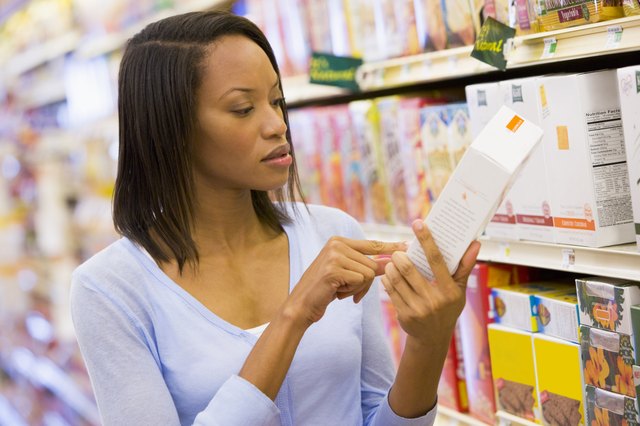


Post a Comment for "43 reading nutrition fact labels"